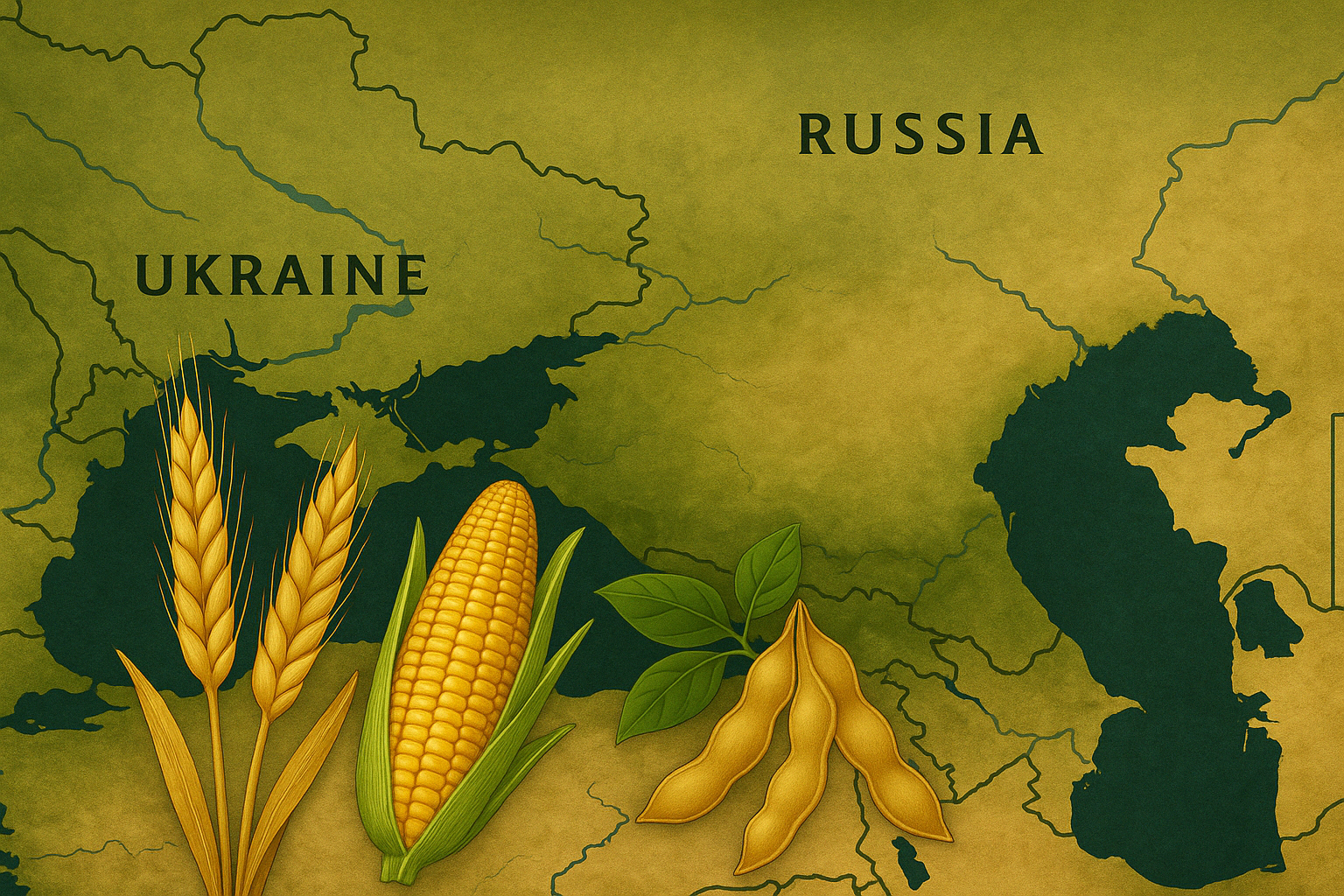Ukraine: Back to Market-Driven Export Pace
Ukraine's grain export dynamics have stabilized following years of disruption, with a return to traditional seasonal rhythms. Wheat exports peaked in the first half of the season and are now slowing due to lower remaining stocks. Maritime corridors are operating more reliably, allowing Ukraine to regain lost ground in Asian markets such as Indonesia, Thailand, and Vietnam—displacing previous suppliers like Bulgaria. Corn exports to the EU remain robust, with Ukraine providing 57% of the bloc’s imports, compensating for a lack of Chinese demand with expanded trade to Turkey.
Shifting Acreage and Crop Priorities
Rising grain prices have encouraged an expansion of winter wheat acreage in Ukraine and other countries in the region—except Russia, where economic constraints and regulatory overreach are prompting a reduction in sowings. For the 2025 season, overall wheat output in the Black Sea and Danube regions is expected to match last year’s level of 143 million tons. While Russia’s production may decline, yield gains and acreage expansions in Ukraine and parts of the EU may offset the loss.
Corn acreage shows a mixed picture: Ukraine is expanding plantings, while Romania and Bulgaria are reducing theirs, citing rising costs and weather risks. Poland, Romania, and Ukraine remain key corn suppliers to the EU, with Ukraine far outpacing its regional peers. Despite this, acreage competition from oilseeds like sunflower and rapeseed continues to intensify.
Oilseeds: Mixed Outlook Amid Record Acreage
Global oilseed production hit a record this season, largely due to soybeans. Yet yields fell short of expectations due to weather volatility. In Ukraine, crushers have outbid exporters for soybeans, keeping domestic prices firm. Soybean acreage will shrink slightly next season after a record year, while sunflower acreage is set to rise. Rapeseed remains a preferred crop in Bulgaria and Romania, where some farmers have switched from corn, but Ukraine reduced its rapeseed plantings due to fall drought conditions.
Despite a small decline in planted areas, soybean output in the region could climb to 14.9 million tons due to favorable yields. Rapeseed output is forecast at 14.5 million tons. Sunflower remains the most productive oilseed, and Ukraine plans to expand its acreage in 2025/26.
Romania: A Cautionary Tale of Climatic Impact
Romania’s grain production dropped to a decade low in 2024, with total cereal output down 14.7% year-on-year to 17.87 million tons. Wheat fell slightly, but maize production dropped sharply from 8.5 to 5.99 million tons. Oilseed crops suffered even more—sunflower production collapsed by 34%, and rapeseed by 32%, highlighting the vulnerability of regional agriculture to drought and water stress.
This decline, driven by extreme weather and rising input costs, illustrates broader risks across the region, especially where irrigation and infrastructure remain underdeveloped.
Logistics, Policy, and Fertilizer Access
The reopening of key fertilizer plants like Azomureș in Romania and tighter UAN fertilizer margins in Ukraine underscore the growing strategic importance of local input supply chains. Additionally, shifting EU-Ukraine agricultural trade policies are reshaping logistics and export channels in the region, as countries adapt to new trade rules and customs pressures.
Global Trade Dynamics and Market Opportunities
Trade friction between the U.S. and the EU, along with potential tariff escalations, may shift trade flows in favor of the Black Sea. Analysts believe that Ukraine could expand market share in both Europe and Asia as a result. If tensions escalate further, Ukraine may benefit from displaced U.S. grain and oilseed sales, especially in China.
Forward Outlook
Looking ahead, weather remains the key wildcard. While winter crops have emerged in relatively good shape due to a mild winter, spring conditions are crucial for final yields. Demand from Turkey and China could help absorb some of the surplus supply, but global stockpiles and reduced wheat trade forecasts are likely to weigh on prices unless significant weather disruptions arise.
Grain production across the region is projected at 225 million tons next season, slightly below record levels due to expected declines in Russia. Oilseed output may reach 67 million tons—potentially the second-highest on record.
The Black Sea region is at a pivotal moment. With market forces taking the lead, weather, logistics, and policy alignments will shape outcomes more than ever. Ukraine has emerged as a resilient player, balancing recovery in export flows, input challenges, and acreage shifts. But across the region, adaptability to climate, supply chain flexibility, and geopolitical developments will continue to define the grain and oilseed markets well into 2026.

